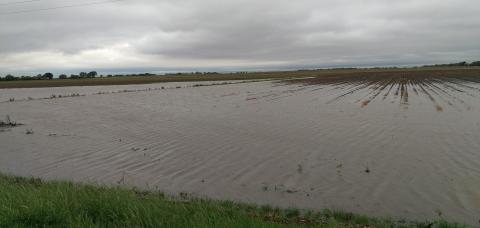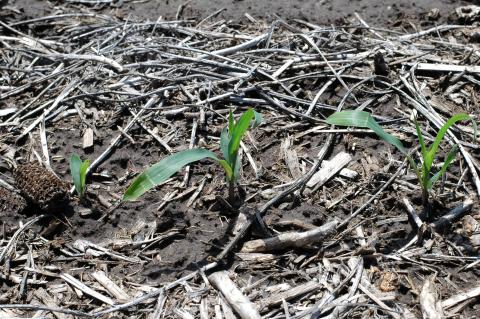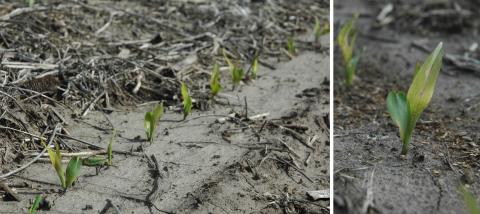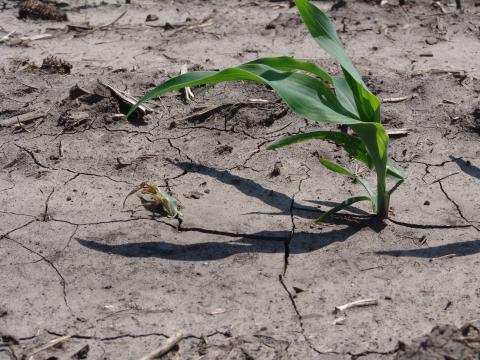Scouting and Managing Stalk Borer in Corn
May 24, 2017
Common stalk borer eggs have hatched throughout Nebraska and scouting should begin when 1300-1400 degree days (DD) have accumulated. Current accumulations range from 500 to 1200 DD.
Corn Survival in Ponded or Flooded Fields
May 19, 2017
Heavy rains of 2 to more than 4 inches in south central Nebraska May 15-19 have led to ponding or flooding in many fields. Survival of young corn plants under these conditions depends on several factors, described here.
Cross-Banding on Corn Leaves: One Week Later
May 17, 2017
A gallery of photos showing decreased effect of yellow cross-banding in corn leaves in south central Nebraska one week after initial report in CropWatch. This effect was due to pre-emergent cold temperatures and is not expected to affect yield.

‘Cross-Banding’ on Corn Leaves Due to Pre-Emergent, Cold Soil Temperatures
May 12, 2017
Early-planted corn at the university's South Central Ag Lab was not emerged during the late-April cold snap, but upon emergence displayed symptoms of “cross-banding”: yellow to pale green, horizontal bands ― perpendicular to the leaf midribs. These often appear in a similar position on other seedlings and at about the same height above ground on different leaves.
Scout Emerging Corn for Early Season Insects
May 11, 2017
As corn begins to emerge, be alert to the potential for damage from early season insects such as cutworms, wireworms, or white grubs. Wireworms and white grubs are most often associated with fields that have been in pasture or CRP where the grasses were allowed to grow for more than one year. It is rare to see these problems in continuous corn, but exceptions happen. Since wireworms and white grubs feed underground and cutworms feed on or below the soil surface, scout for plant damage and then dig in soil around the plant to identify the insect causing the damage.
Hindsight of 2016 Corn Yield Forecasts by the Yield Forecasting Center
May 11, 2017
Here we provide an evaluation of the corn yield forecasts released during the 2016 crop season by the Yield Forecast Center. We compared our end-of-season forecasted yield potential against the average corn yields reported by USDA NASS for rainfed and irrigated production.
Do I Need to Replant My Corn?
May 5, 2017
Considering whether your corn should be replanted? The authors look at types of plant damage at early growth stages and the effect on potential yield. It includes a table of relative yield potential of corn by planting date and population.
Recent Cold, Wet Conditions are Favorable for Seedling Diseases in Early Planted Corn
May 5, 2017
Recent cold, wet field conditions and fluctuations in soil temperatures have put early planted corn at risk for seedling disease development. Cold soil temperatures and episodes of recent rainfall (and snow) are especially favorable for some of the most common and damaging seedling diseases favored by cold wet conditions.






